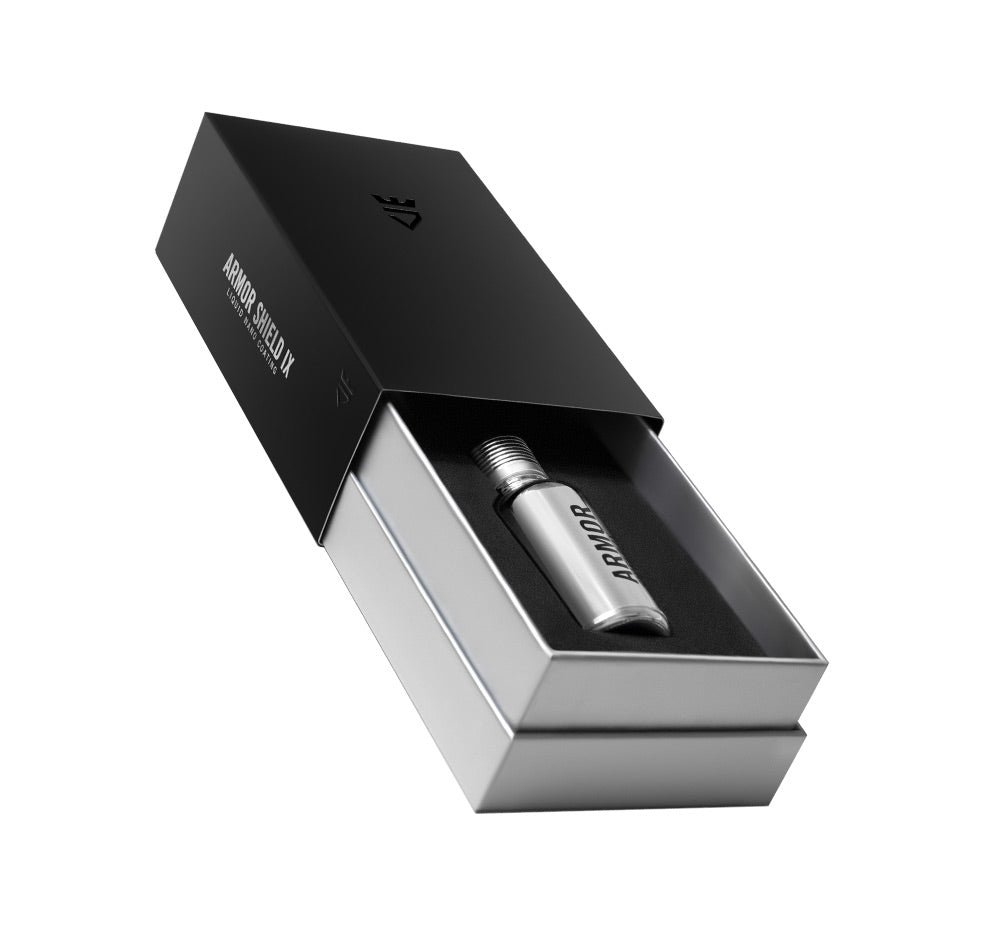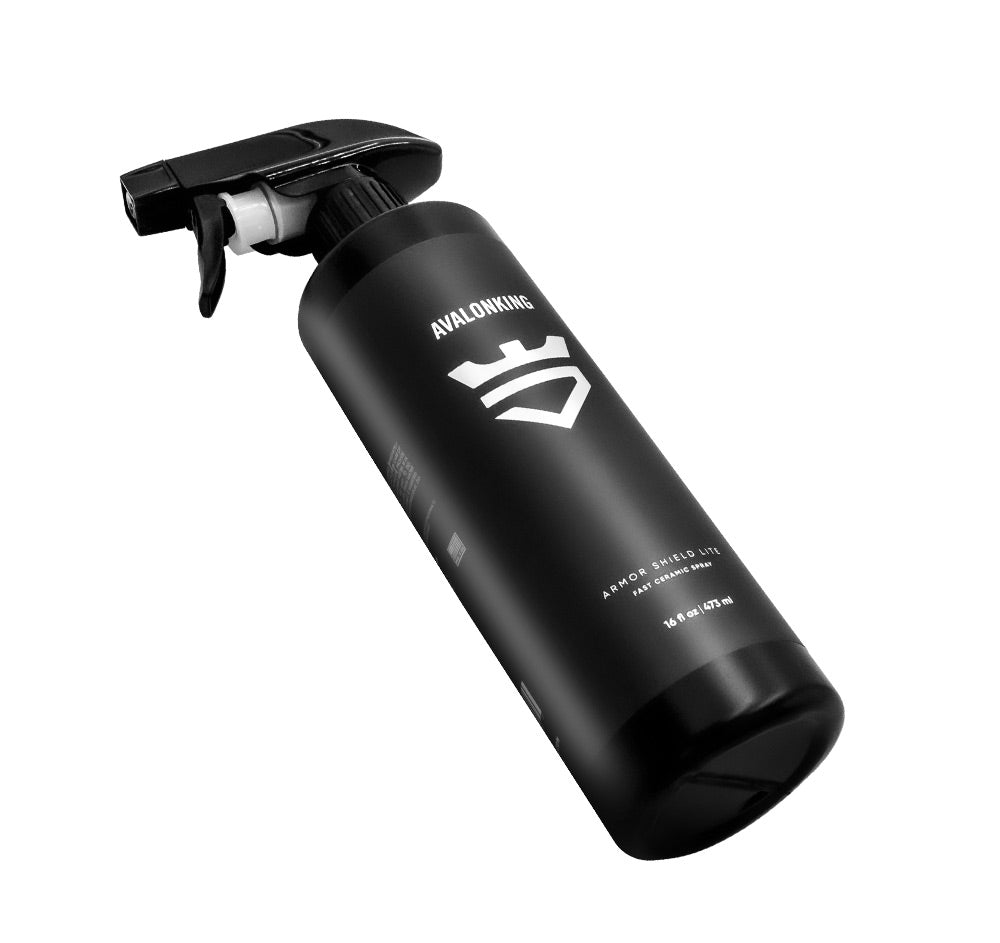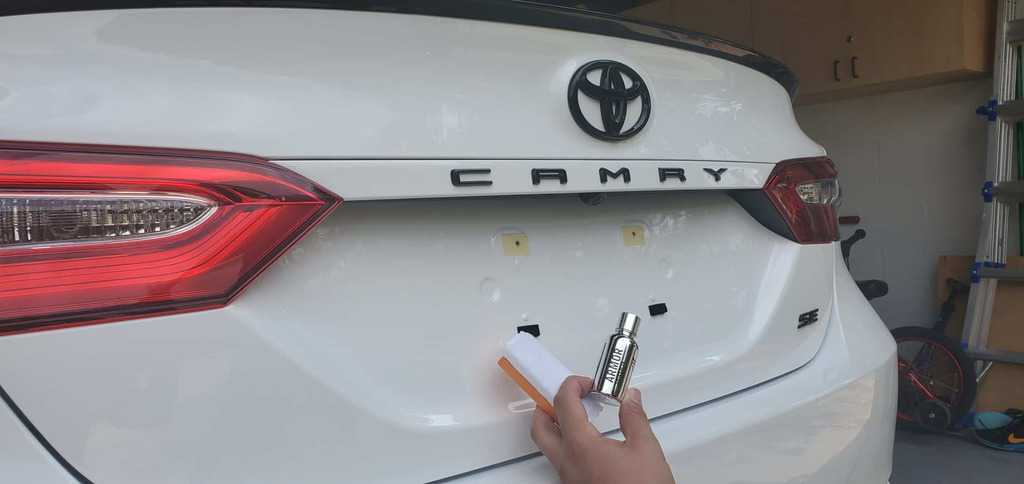There are several shade-tree solutions to common, everyday problems. One of the most popular is using penetrating oil or WD-40 to loosen rusty bolts, extend the lifespan of windshield wiper blades, or even a universal cleaning solution. But did you know that many car owners swear by its ability to fix small scratches, or reduce bugs from sticking to car paint?
People use WD-40 or other generic penetrating fluids for multiple reasons. But is it safe to use on your car’s paint job? Are there risks to applying it to a clearcoat, glass, or other exterior automotive materials?
These are questions we’ll answer in today’s AvalonKing blog.
What is WD-40?
In case you’ve been in a coma or just not too mechanically inclined, WD-40 is a penetrating fluid lubricating oil that was created in the 1950’s. It’s pretty much the go-to solution for loosening things that are stuck or providing lubrication to something that needs some grease.
Here is a cool bit of trivia. It’s first application was used as a spray coating on a missile built by Convair to reduce rusting and corrosion.
You’ll find WD-40 in the garage or under the kitchen sink in more than 60% of households in the United States. So, to say it’s a popular product would be an underestimate. Around the house, it’s used mainly to loosen metallic parts that have been corroded or are stuck with excess oxidation (or rust).
In the garage, you’ll find many mechanics and machinists using it as a lubrication spray, as they cut metal. The special ingredients help to dispel heat, making the cuts cleaner and with fewer jagged edges.
What is WD-40 Made From?
So, where did the name WD-40 come from? The WD is an abbreviation for Water Displacement, or the primary task it accomplished. The formulation helps to displace moisture from surfaces – so the WD makes sense. As for the 40, that’s the amount of formulations or attempts to create a final solution that worked as intended.
Now, let’s dive into the formulation – or what makes WD-40 the perfect all-in-one removal solution. Unfortunately, the official recipe is a highly-guarded secret on par with Coke or KFC’s “11” herbs and spices. However, thanks to Material Data Safety Sheets published on the internet, it’s not that hard to come close.
There are four primary ingredients – with the percentages being the proprietary information.
- Aliphatic Hydrocarbon (which is similar to kerosene)
- A petroleum-based paraffin
- Flammable aliphatic hydrocarbons
- Carbon Dioxide
There are trace elements including mineral oils and alkanes of carbon. When you combine all these ingredients in the percentages that WD-40 has perfected, you get a highly-impressive anti-squeak lubricant spray.
Why Would you Want to Use WD-40 on Car Paint?
Now we’ll dive into the nitty gritty of this article – why it’s commonly used on car paint – and whether that’s a good idea. Let’s start with the why. WD-40 is similar with many car polishes, in the fact that is contains oils and hydrocarbons that allows the formulation to seep into small areas. It also has anti-corrosive agents that can reduce the potential of oxidation.

This introduces the main purpose for using it on your car paint – to fill deep scratches. Now, let’s be clear, this doesn’t mean fixing the scratch. It’s basically a quick way of putting a band-aid on the scratch, to ensure that water does not find its way into the bare metal – leading to the development of rust.
However, car owners are creative cats, and over the year, WD-40 has been used on a cars surface for several other purposes.
As a Color Enhancer
There are some car owners who use WD-40 as a wax – which amplifies the luster of paint. When it’s sprayed on top of paint with a clear coat, the paraffins in the solution produce a shiny hue – which can replicate the shine you get from a fresh coat of wax.
Improve Hydrophobic Properties
It’s also a common shade-tree treatment for improving hydrophobic properties on non-protected paint surfaces. Car owners will spray it on the surface to help reduce the potential of bugs, bird droppings, tar, and tree sap from sticking to paint. It also can bead water fairly-decent as well.
Removing Oil & Bug Guts

Bug splatters and other sticky debris is easy to remove with WD-40. A simple spray, letting it soak for a few minutes, and then wiping off will take care of most stuck on debris.
Likewise, that annoying valve cover or seal leak under the hood is pissing you off, a few sprays of WD-40 will clean up that splattered oil quickly. Since it’s a degreaser, WD-40 is great for removing those pesky water-insoluble substance including grease.
Extend the Lifespan of Wipers and Gaskets
The main reason that door trim gaskets and windshield wipers wear out is frequent exposure to the elements – like UV rays or oxygen. As they age, the gasket material will begin to dry, eventually crack, and then begin to fail. Some people use WD-40 to keep these items protected from the elements by spraying some on a cloth, then wiping onto the rubber materials.
Great for Spark Plug Maintenance
If you’re a DIYer, and complete your own maintenance, you’ve likely used WD-40 as a helpful tool when cleaning spark plugs. As plugs age, it’s common for condensation to collect on the spark plug, which leads to poor spark performance. If you’re having condensation issues with an older engine with weak internal seals, a quick spray of WD can help your starting issues.
The Universal Cleaning Tool
Annoying rust on your license plate frame, corrosion on steering and suspension parts, or caked on debris under the hood is easily removed with WD-40. In fact, there are several car owners who use this product and duct tape for vehicle maintenance.
Is WD-40 Safe to Use on Paint?
WD-40 is filled with a lot of products when applied to car paint alone – can be harmful to paint. For example, kerosene (which is similar to the primary ingredient) can eat through even the hardest clear coat in a matter of days.
However, due to the brilliant mixture and blend of ingredients – Yes – it’s SAFE to use on paint. But, as we’ll describe in the information below, it’s just not a smart idea.
When You Shouldn’t Use WD-40
I’m going to preface this paragraph by saying that I was raised to fix things broken, not put super glue or a band-aid on them. That said, WD-40 should only be used as a penetrating fluid to help you loosen rusted, corroded, or fused bolts, nuts, and other fasteners.

It’s typically assumed that using it for bike chains, on door jams, and other moving parts is more than acceptable. And as a one-time quick fix, that is accurate. However, here is the downfall of WD-40, and a main reason why using it on car paint is likewise not a smart idea.
The oils found WD-40 are notorious for collecting dirt, dust, debris, and other contaminants. This makes the items you’re spraying WD-40 sticky, dirty, and in the case of a moving part – like hinges or chains, may cause them to bind-up.
With car paint, that scratch that is exposed might be protected for a day or two. But by then, the area will be so dirty, you’ll have to wash it off. When this happens, you’ll find removing a nearly impossible task.
What Soap to Use to Wash WD-40 Off Your Vehicle
If you’re in the inevitable situation of having to wash WD-40 off your paint, there really is only one good method. You’ll want to use an automotive detergent car shampoo – which is commonly known as a wax-stripping or prep shampoo.
The decontamination car shampoo is a pH strong formulation, meaning is a strong base – which acts as a detergent to penetrate oils that are found in waxes, sealants, and yes – WD-40.
When you use a foam gun to apply onto the paint surface first, it can sit on the car and agitate for a few minutes. This action helps to break down the lubricants in WD-40, and the caked-on dirt and crud stuck to it.
Wrapping it Up
WD-40 is one of those miracle solutions like Velcro and duct tape that simply makes life much easier. However, it’s got an intended use and purpose. By using it as a scratch repair, for improved hydrophobic properties, or to fix that fouled spark plug, you risk creating more problems down the line.
If you’re in a situation where you’ve developed a scratch, have condensation in your combustion chamber, or looking to protect your paint, it’s always smarter to find the root issue, and fix it. While WD-40 and duct tape can save you’re butt from a troubling situation, it’s just not a smart long-term solution.













23 comments
Carol Lunn
Hi I have just took a L plate off my motor bike can I use W D 40 to re.ove the sticky marks ?
Hi I have just took a L plate off my motor bike can I use W D 40 to re.ove the sticky marks ?
Sophia
I have a brand new 2021 Malibu about month ago i got some splattered tar on my lower passenger side door. I paid a detail service $15 to remove it. Whatever they sprayed on my car door did the trick❤️ Now I’m in the same boat. I was wondering if I could just purchase a small can of WD40 and remove the tar myself?
I have a brand new 2021 Malibu about month ago i got some splattered tar on my lower passenger side door. I paid a detail service $15 to remove it. Whatever they sprayed on my car door did the trick❤️ Now I’m in the same boat. I was wondering if I could just purchase a small can of WD40 and remove the tar myself?
Maree
Bird droppings were on the hood of my car and dried, so I sprayed WD40 onto the bird droppings both on bonnet and hood, next morning I tried to clean the patches on my car paint and it has left areas on the paint, that cannot be removed. I feel my car is ruined, my mechanic told me not to try rubbing cleaners into it as will make it worse.
What can I do?
BTW I am very happy with the WD40 otherwise
Bird droppings were on the hood of my car and dried, so I sprayed WD40 onto the bird droppings both on bonnet and hood, next morning I tried to clean the patches on my car paint and it has left areas on the paint, that cannot be removed. I feel my car is ruined, my mechanic told me not to try rubbing cleaners into it as will make it worse.
What can I do?
BTW I am very happy with the WD40 otherwise
Dale Pearl
Hi Robert!
You could certainly do that. Spray a touch on there let is sit for a few minutes and then wipe off. Wash and use a quality car shampoo around the area and you should be fine.
Hi Robert!
You could certainly do that. Spray a touch on there let is sit for a few minutes and then wipe off. Wash and use a quality car shampoo around the area and you should be fine.
Robert Kirton
i had my car serviced a few weeks ago and I noticed that the car door hinges had been oiled. Unfortunately, some of the oil has dropped onto the car door base. I would like to remove , can I use wd40 to remove and, if so, how do I go about it .?
ta very much,
Robert.
i had my car serviced a few weeks ago and I noticed that the car door hinges had been oiled. Unfortunately, some of the oil has dropped onto the car door base. I would like to remove , can I use wd40 to remove and, if so, how do I go about it .?
ta very much,
Robert.
Dale Pearl
I wouldn’t advise that course of action. WD40 would prevent Armor Shield from bonding to the painted surface. As would the wax. Consider what we call the rule of stacking Debra. You want the products with the longest life cycle closer to the paint. Aside from that WD40 on top of Armor Shield would negate some of the properties. Wd40 would attract dirt build-up and hide Armor Shields dirt repelling effect.
I wouldn’t advise that course of action. WD40 would prevent Armor Shield from bonding to the painted surface. As would the wax. Consider what we call the rule of stacking Debra. You want the products with the longest life cycle closer to the paint. Aside from that WD40 on top of Armor Shield would negate some of the properties. Wd40 would attract dirt build-up and hide Armor Shields dirt repelling effect.
Debra Gibbs
how about doing rhe whole car with WD40 & the waxing it after that? Would that help the shine stay longer?
how about doing rhe whole car with WD40 & the waxing it after that? Would that help the shine stay longer?
Dale Pearl
Hi Susan!
The best way to deal with a scratch on your paint is to try polishing it out. Start with a low abrasive compound and work up as needed.
Hi Susan!
The best way to deal with a scratch on your paint is to try polishing it out. Start with a low abrasive compound and work up as needed.
Susan
OK so what is the recommended way to remove a small surface abrasion on my vehicle’s paint that has removed the shine?
OK so what is the recommended way to remove a small surface abrasion on my vehicle’s paint that has removed the shine?
Dan
Well im sorry but I disagree. I hadn’t washed my car for several months and when I finally got around to it I used WD40 on a cloth. Its a 16 year old Mercedes. I was amazed at the shine and even a passer by commented on it. After a while I applied a spray on wax polish and buffed it to a shine. That was 2 months ago and it still looks shiny today. I wont use WD40 every time but maybe once or twice a year before I wax it.
Well im sorry but I disagree. I hadn’t washed my car for several months and when I finally got around to it I used WD40 on a cloth. Its a 16 year old Mercedes. I was amazed at the shine and even a passer by commented on it. After a while I applied a spray on wax polish and buffed it to a shine. That was 2 months ago and it still looks shiny today. I wont use WD40 every time but maybe once or twice a year before I wax it.